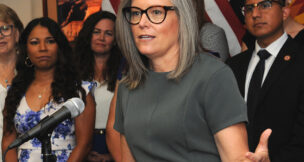Chasing Bioscience
Arizona Capitol Reports Staff//April 3, 2009//[read_meter]
Research assistants Danielle Frost (front) and RiLee Robeson work in the TGen laboratory, using a process called “protein loading” as part of research to fight diseases such as Alzheimer’s. Three...
No tags for this post.

















